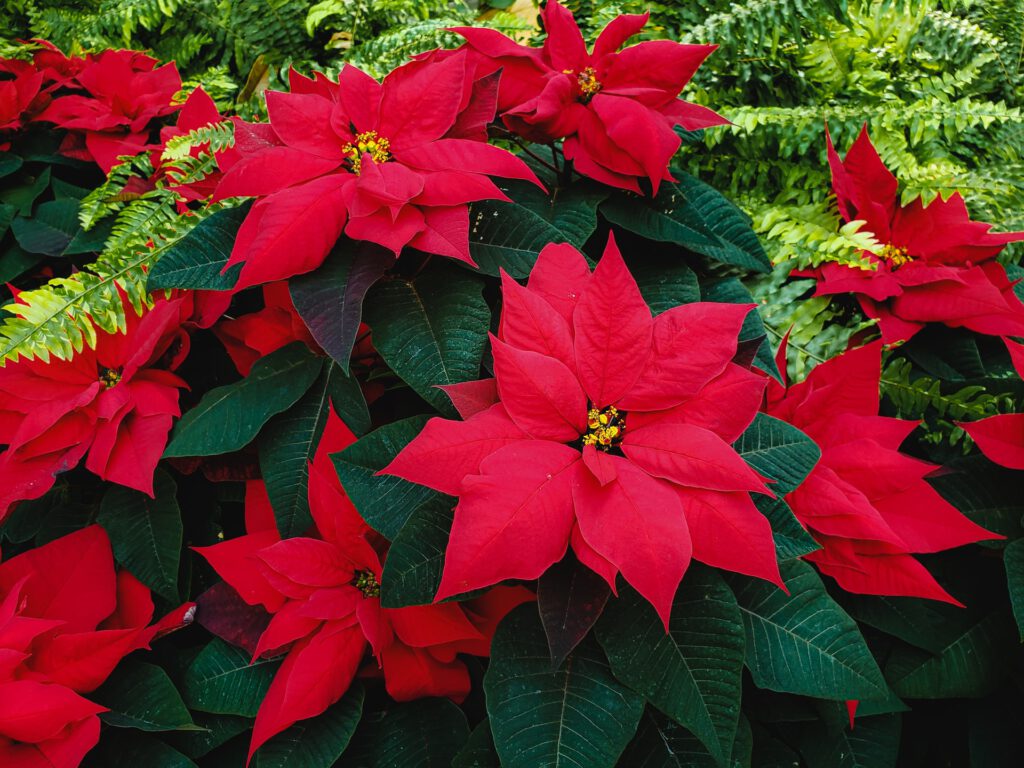Ten plants to keep away from your pet in the festive season

As winter and the festive season arrives, many of us will be bringing the outside in, to brighten up dark days and celebrate old customs.
For pet owners, though, there are some hidden dangers lurking amongst the greenery. Many new pet owners may be seeing their first year with dogs and cats, and even seasoned owners may be surprised at how many plants could be toxic for their pets.
The pet insurance experts at money.co.uk have taken a look at 10 of the most toxic plants, and offer advice on how to keep pets safe.
If you think your pet has eaten any of these plants, do contact your vet immediately for advice.
Christmas trees
Not every home has a Christmas tree, and not every home that does has a real tree. But if you do, it’s good to be aware that the pine needles are potentially a problem for pets. If they chew the needles, they can release oils that can lead to mouth irritation and stomach upsets. The prickles of the needles might also lead to internal damage if ingested.
Garden greenery
Holly
Holly is a great decorative plant, especially if it’s complete with radiant red berries. But beware if any falls on the floor. The berries and the leaves of a holly can cause irritation in the mouth and drooling, as well as the more serious complaints of gastrointestinal upset – such as vomiting – and diarrhoea. Eaten in large amounts, holly can also lead to excessive head shaking.
Mistletoe
Traditionally hung from a height, mistletoe is also a problem if it falls with reach of a pet. Many of the berries contain chemicals such as polysaccharides, alkaloids, and lectins. These can cause harm to both dogs and cats. Small amounts can lead to gastrointestinal irritation such as vomiting and abdominal pain. Eat in larger quantities, and your pet may experience abnormal heart rate, low blood pressure and a lack of coordination.
Ivy
As with many of the plants we bring in from the garden at this time of year, the Hedera species of ivy can potentially cause stomach upsets if eaten, and is also known for causing severe skin irritation for some animals.
Laurel
The family of laurels includes culinary bay and cherry laurel. They all contain toxins that can lead to vomiting, abdominal pain, hypotension and in extreme cases, muscle weakness and even seizures.
Snowdrops
Not so often brought into the house, but if you have these delights growing in the garden, be aware if your pet is showing interest or digging around them. There are toxins in the stems and the leaves, but the most dangerous part of the plant is the bulb. If your pet does ingest a part of a snowdrop they may experience abdominal pain, vomiting, lack of coordination, and a drop in heart rate and blood pressure.
Yew
We often associate the dangers of yew with livestock, but the taxines present in all parts of the yew are highly poisonous to pets as well. Ingested, they can cause vomiting, weakness, breathing difficulties and in critical cases, life threatening change in heart rate and blood pressure.
House plants and flowers
Poinsettias
It’s a tradition for many of us to introduce these beautiful plants into the home for the festive period, as they brighten up a room with their red, pink and variegated bracts. We may well set them in a fireplace or low table, but beware if they’re in reach of a curious pet. The milky sap of the bracts can cause nausea, vomiting, drooling and diarrhoea, as well as irritation in the skin, mouth and oesophagus.
Amaryllis
Amaryllis are spectacular plants, but everything about them is toxic. The worst offender is the bulb itself. Pets eating this plant may experience severe gastrointestinal upsets – such as vomiting and abdominal pain – loss of appetite, lethargy and tremors.
Lilies
Cat owners may well know about the dangers of lily pollen, but all parts of the lily can cause problems for both felines and dogs. And if gastrointestinal damage is severe enough, it could result kidney failure for cats.
Avoiding problems
Pets will be curious about anything new in the house. Cats are likely to be safer than dogs because they may investigate and try to play with new arrivals, but they are less likely to eat what they find. Dogs are more at risk as they dig and chew more readily, and puppies are particularly prone to learning lessons the hard way.
The most effective way to avoid problems is simply not to bring these plants into the house. If you do, then making sure your pet doesn’t come into contact with them is the best way to go. Keep plants on high shelves, reserve greenery for draping at height, and keep an eye out for fallen leaves and berries. Perhaps removing the berries altogether would be a good protective strategy.
And just in case, make sure you have the number of your vet to hand. With many clinics likely to close over the Christmas period, make sure you know how to contact an emergency vet, just in case.
For more information on toxic plants and pets, you can also visit PDSA, The Kennel Club, PETMD and Pet Poison Helpline.
Worth a read:
Photo by Jeffrey Hamilton on Unsplash

